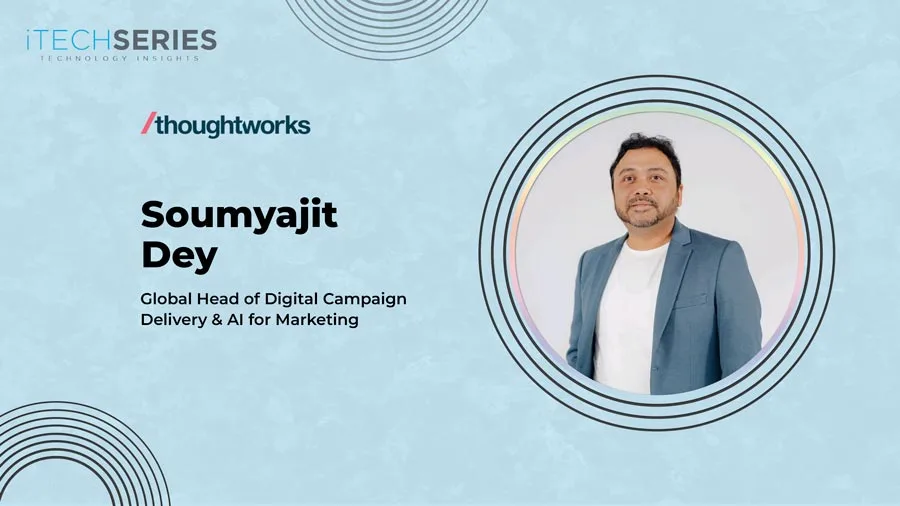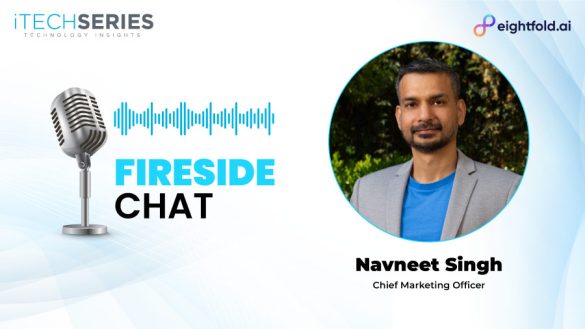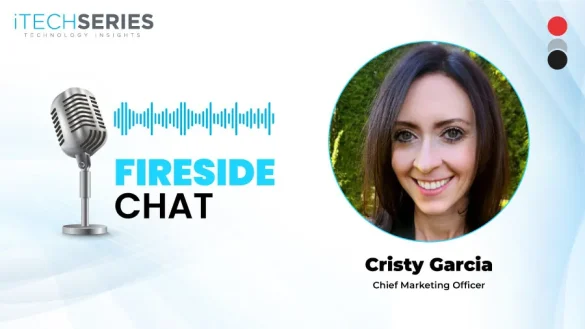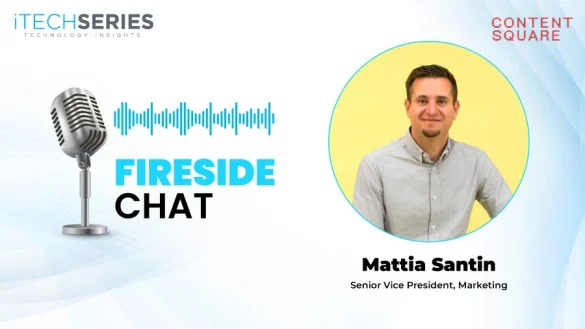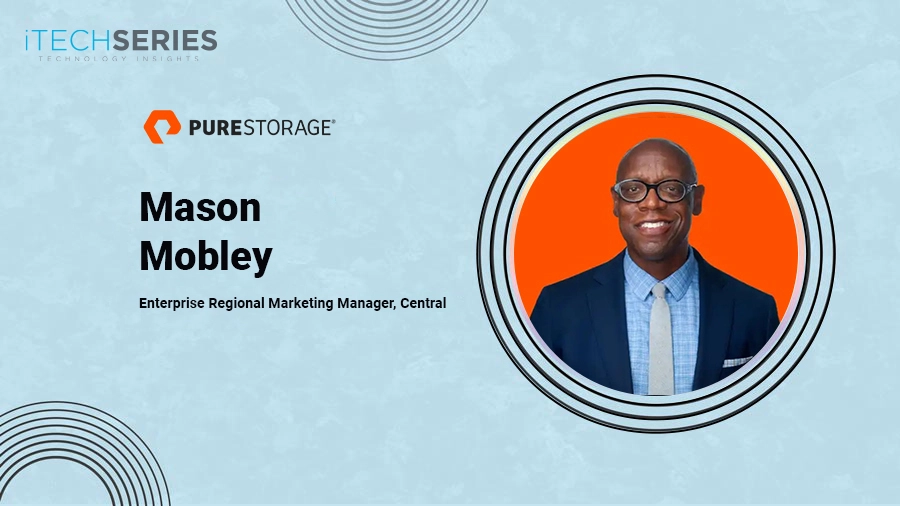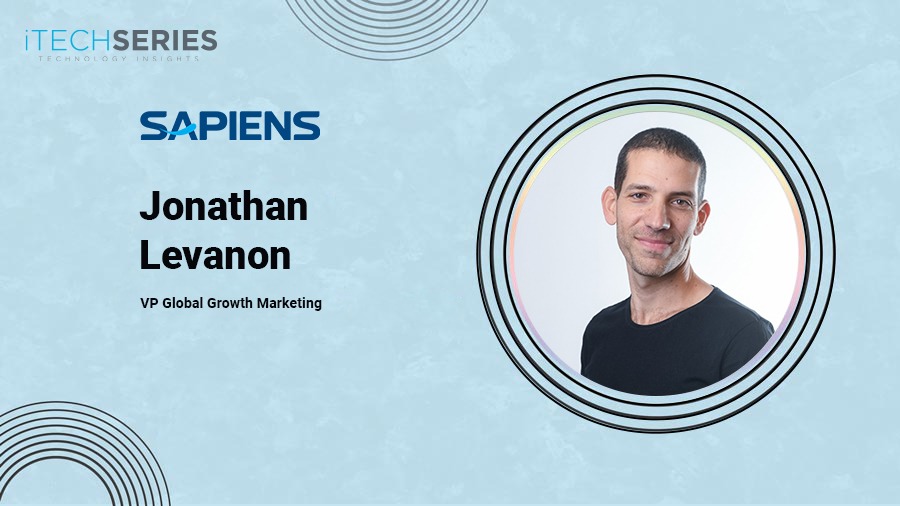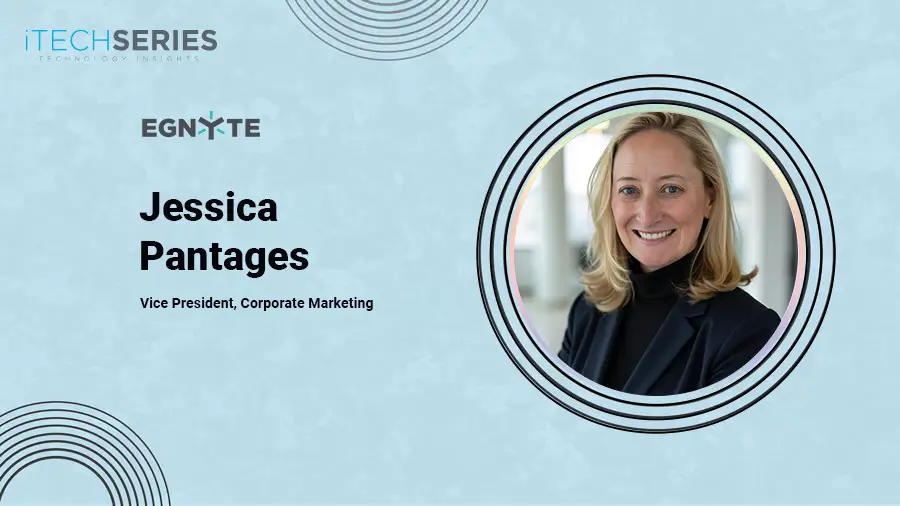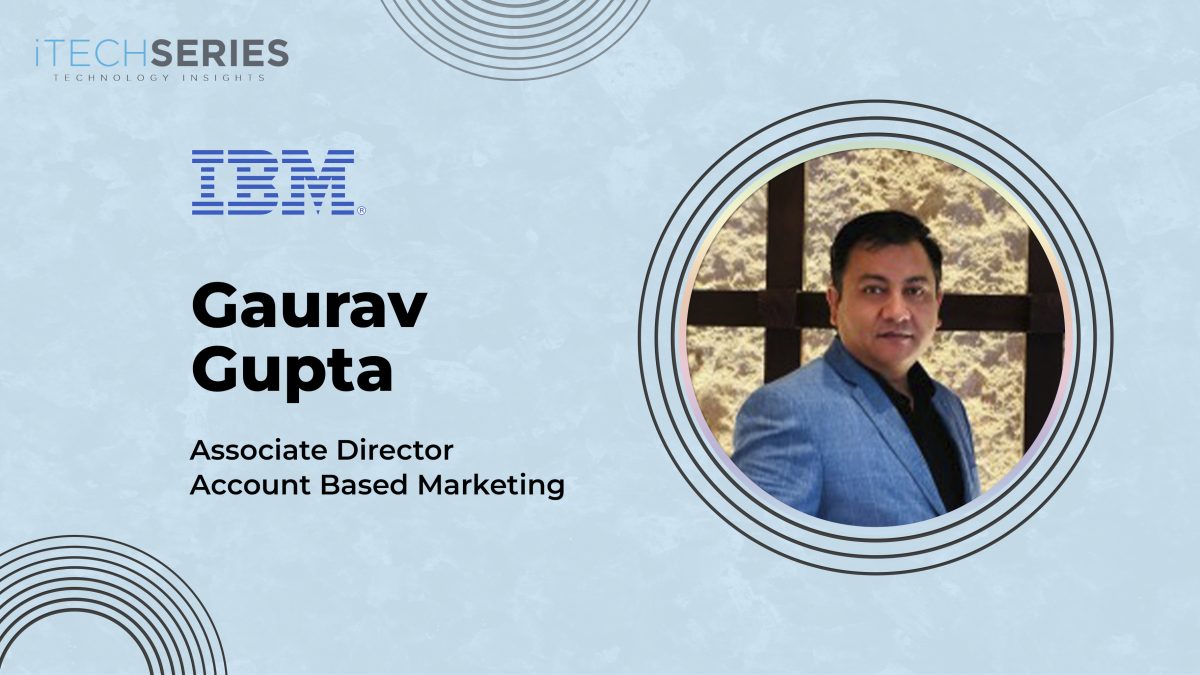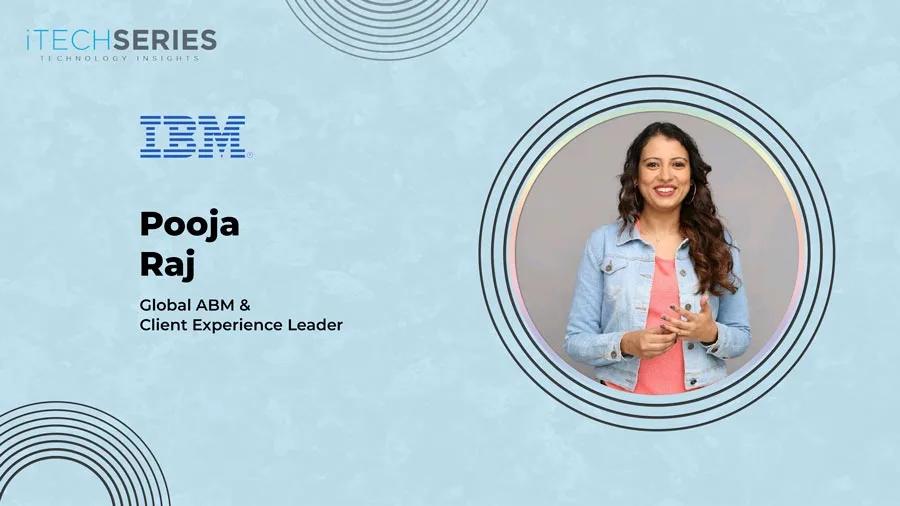Soumyajit Dey, Global Head of Digital Campaign Delivery & AI for Marketing at Thoughtworks, shares his journey as a digital-first marketing leader. He explores the intersection of AI, creativity, and storytelling in global campaigns—offering insights into cross-functional collaboration, scalable GTM strategy, and building future-ready marketing functions that drive impact and innovation.
Welcome, Soumyajit! Could you tell us about yourself and your journey as a global digital marketing leader?
Thank you! I’m a digital-first marketing leader with over 20 years of experience at the crossroads of marketing, technology, and communications. I currently lead global digital campaign delivery and AI for marketing at Thoughtworks, where I focus on scaling impactful, modern campaigns across markets. My journey has been shaped by a love for storytelling, a passion for innovation, and a drive to build future-ready, tech-enabled marketing functions. Along the way, I’ve had the privilege of leading high-performing teams, designing scalable campaign infrastructures, and delivering strategic impact, making the ride both meaningful and incredibly rewarding.
How do you balance the use of AI and automation with the need for human creativity in your global marketing campaigns?
My approach to balancing AI and human creativity in global marketing is collaborative. AI is a powerful co-pilot, but creativity is the soul of marketing. AI serves as a powerful tool for data analysis, personalization at scale, automation of repetitive tasks, and predictive insights, freeing up human marketers. However, human creativity remains crucial for crafting brand narratives, generating original ideas, ensuring cultural sensitivity, and building emotional connections with diverse global audiences. The balance comes from knowing when to scale and when to tell a story.
In our organization, we leverage AI insights to inform our creative process, ensuring relevance and impact, but the core messaging, storytelling, and brand identity remain with human marketers. This synergy ensures our campaigns are both efficient and authentically human, driving real ROI by connecting with audiences meaningfully. AI augments human ingenuity, leading to more strategic, creative, and effective global marketing initiatives. While I share this, it’s important to keep in mind the ways of working with AI are evolving; hence, it’s a constant learning process and adapting to the changes.
What has been you’re most challenging yet rewarding marketing campaign experience?
Redesigning our entire digital outreach strategy for the global campaigns and aligning and integrating MarTech platforms without missing a beat on live campaigns was exciting, intense, and rewarding. We defined the new ways of working that included our metrics, workflows, team roles, and creative processes. I personally believe it was an amazing experience with stakeholder alignment, strategic focus, and execution. The real win wasn’t just campaign delivery, but it was how we elevated the team’s capabilities and future-proofed how we operate. Seeing that transformation land with impact made the challenge worth it.
How do you foster effective cross-functional collaboration across sales, product, and analytics to drive unified GTM campaigns?
I treat cross-functional collaboration as a design challenge, not necessarily a communication task. It starts with shared goals and co-owned outcomes. As a part of the GTM ops team, I, my immediate team, and the broader cross-functional teams enable creation & visibility across shared dashboards, agile rituals, and early planning syncs so everyone feels part of the journey. We have found success in using data as a common language and storytelling as the bridge. When cross-functional teams, including sales, see how a campaign is designed around their reality, or service-offering teams see market signals shaping content, it’s easier to move in sync.
I also like to encourage open communication, active listening, and empathy across teams. Proactively share relevant data and insights from Analytics, encouraging joint analysis for data-driven decision-making and continuous improvement. Build strong inter-team relationships through knowledge sharing and celebrating joint successes. Implement shared performance dashboards to track progress collaboratively. Conduct regular post-campaign retros to identify learnings and adapt processes. The goal is to create a cohesive environment where shared goals and mutual understanding drive impactful, unified GTM campaigns and stronger business outcomes. With an AI-first approach and at the core of how we work evolving, I see AI playing a huge role in how we effectively foster cross-functional collaboration.
“I see the future of B2B marketing as a powerful convergence of attribution, GTM funnels, and ABM, creating a more targeted, efficient, and measurable approach to acquiring and retaining high-value accounts.”
What are some of the biggest challenges and opportunities you see in today’s evolving landscape of AI-powered marketing?
The challenge is cutting through the noise. Everyone’s experimenting with AI, but not everyone, perhaps, is using it meaningfully. The opportunity lies in orchestration. AI is helping us shift from linear campaigns to responsive, multi-signal journeys. It’s exciting to see the rise of agentic systems that can optimize in real time across media, content, and audience touchpoints. But it’s also a mindset shift: less control, more enablement. Those who lean into this intelligently will lead. It’s also important to track how we are measuring real progress. In my mind there are a few leading and lagging indicators that organizations should measure to know if they are truly on the path to becoming AI-first.
The five metrics are: Revenue per Employee (lagging, indicates value amplification), Customer Satisfaction (lagging, reflects experience quality with AI), % of Teams with AI Access (leading, foundational for adoption), Active AI Usage by Team (leading, measures real integration), and % of Work by Agents (leading, shows transformational impact). Becoming AI-first means AI actively changes how work is done, driving higher productivity and better customer outcomes. These metrics provide a holistic view of this compounding transformation.
How do you ensure AI initiatives are aligned with broader business goals and deliver strategic value?
I like to tie back AI initiatives to business outcomes, not just marketing metrics. Every pilot we run aims to answer, will this improve time-to-market? Help sales close faster? Enhance decision-making? I also stay close to the tech stack, understanding how AI fits into our MarTech ecosystem, where it integrates, and what it replaces. To me, alignment isn’t just top-down; it’s about giving teams the clarity and confidence to use AI purposefully, not just because it’s available. We have an AI council in our organization, and I am one of the core council members, which helps me stay close to the AI initiatives mapped with business goals.
What principles guide you when building and leading high-performing, globally distributed marketing teams?
My leadership in building global marketing teams primarily is based on the principles of clarity, trust, and empowerment. I believe in creating a shared vision and defining clear goals that resonate across all regions, while empowering local teams with the flexibility to tailor their strategies to their unique market requirements. I have often received feedback that ‘I am a leader who leads with heart ‘which I do, but I also believe I am a leader who leads with mind, someone who likes to take a data-driven approach as appropriate.’
I like to encourage and foster a culture built on trust and open communication, where everyone feels safe to contribute ideas and learn from each other, celebrating the diverse perspectives our global footprint offers. I believe in providing strategic guidance and the necessary resources from a central hub, ensuring brand consistency and efficiency, but always with a focus on enabling local ownership.
I believe great teams are built on shared purpose and clear operating rhythms. With distributed teams, time zones shouldn’t become silos, so I like to invest in practices that connect, not just coordinate. Investing in the growth of our global talent and facilitating cross-regional learning are key priorities. I provide the team members room to lead, experiment, and grow, and I make it a point to amplify their wins. Culture isn’t built by geography; it’s built by intention. And with the right intent, distributed teams can feel more connected than collocated ones.
Ultimately, we operate with a data-driven mindset, using clear metrics to track progress and provide constructive feedback. My aim has always been to lead a cohesive, high-performing global team that’s connected by a common purpose and driven by shared success, and my approach has been to enable and facilitate the same.
You’ve referenced attribution, GTM funnels, and ABM—how do you see these converging to shape the future of B2B marketing?
I see the future of B2B marketing as a powerful convergence of attribution, GTM funnels, and ABM, creating a more targeted, efficient, and measurable approach to acquiring and retaining high-value accounts. We’re moving toward a world where attribution is less about who to credit and more about what to optimize. Funnels are not linear, and ABM isn’t just a tactic; it’s a mindset.
The convergence is in orchestration, which is real-time intelligence that adapts the message, medium, and moment to where the buyer actually is. I see a future where marketing systems behave more like adaptive engines, learning, reacting, and aligning dynamically with business intent and customer behavior.
To be specific: Attribution will evolve beyond simple models to provide a holistic, account-centric view of the customer journey. Multi-touch and AI-powered attribution will track interactions across various stakeholders within target accounts, revealing the true impact of marketing and sales efforts at each stage.
The GTM funnel will become more dynamic and personalized, aligning closely with the ABM strategy. Instead of a linear progression, it will adapt to the unique journey of each target account, with marketing and sales activities orchestrated based on real-time engagement and intent data captured through advanced attribution.
ABM will be the overarching strategy, with the GTM funnel and attribution providing the tactical framework. Attribution will inform account selection, content personalization, and channel prioritization within ABM outreach. The GTM funnel will be tailored to nurture key accounts through specific stages, with success measured not just by leads, but by account engagement, pipeline progression, and ultimately, revenue.
What excites you most about where marketing, technology, and communications are heading right now?
It’s truly exciting times where marketing and comms at the intersection of technology and powered by AI are headed. We’re at a really exciting point in marketing, what I like to think of as the beginning of conscious marketing. It’s where automation meets intention, and intelligence works hand-in-hand with creativity. What excites me most is how tools like AI and machine learning are allowing us to be more proactive in serving content that adapts in real time and truly resonates with people. I imagine a near future where AR and VR turn product demos and training into immersive experiences and where data isn’t just for analysts; it’s accessible, visual, and actionable for every marketer. We’re already seeing a shift. AI-powered ABM platforms, smart content tools, conversational AI, and predictive intelligence are making B2B marketing more personalized, relevant, and human. All of this brings us closer to building genuine connections at scale, not just driving conversions, but trust.
About Soumyajit Dey
Soumyajit is a digital-first marketing leader with 20+ years of experience at the crossroads of marketing, technology, and communications. As Global Head of Digital Campaign Delivery & AI for Marketing at Thoughtworks, he leads scalable, tech-enabled campaigns worldwide. Passionate about storytelling and innovation, he builds high-performing teams and future-ready marketing functions. Beyond work, he mentors startups, teaches, and supports digital education, blending purpose with leadership.

